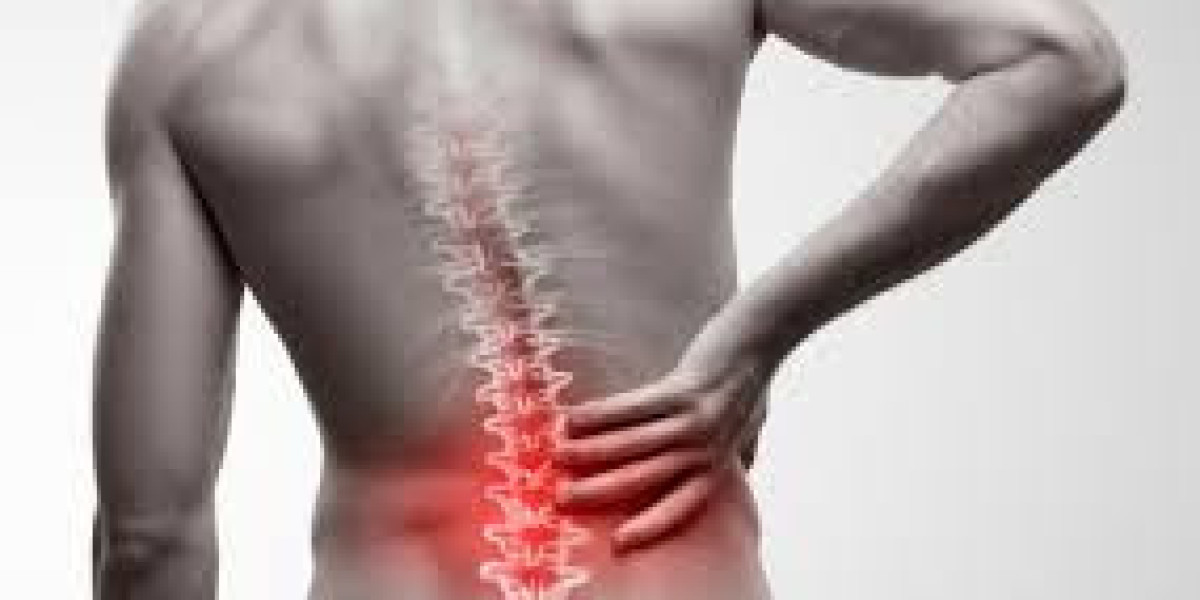Back pain management is essential for anyone who experiences discomfort in their spine, whether it’s due to injury, improper posture, or other conditions. The good news is that there are simple, effective tricks that can help you manage and prevent back pain at home. Incorporating these habits into your daily life can reduce discomfort and support long-term spinal health, making a big difference in your quality of life.
1. The Power of Posture
How you stand, sit, and even sleep plays a huge role in the health of your back. Maintaining a neutral spine reduces stress on the muscles and joints, preventing back pain from developing. The better your posture, the less strain you put on your back.
Easy Posture Adjustments:
| Activity | Posture Tips | Why It Helps |
|---|---|---|
| Sitting | Keep your feet flat on the floor and your knees at a 90-degree angle. Your back should be straight. | Prevents slouching and supports your lower back. |
| Standing | Stand with your shoulders back, weight evenly distributed between both feet. | Helps maintain your spine's natural curve. |
| Sleeping | Sleep on your side with a pillow between your knees or on your back with a pillow under your knees. | Keeps your spine aligned, reducing pressure on your back. |
These small changes can make a world of difference in preventing and managing back pain.
2. Lifting Safely
Lifting incorrectly is one of the leading causes of back pain. It’s important to bend with your knees, not your back, and use your legs to lift objects instead of your spine.
Correct Lifting Techniques:
| Action | How to Do It Right | Benefit |
|---|---|---|
| Bend at the Knees | Squat down to lift, keeping your back straight. | Reduces strain on your lower back. |
| Use Your Legs | Straighten your legs to lift, keeping the object close to your body. | Helps your legs take the load, not your back. |
| Avoid Twisting | Move your feet to turn, rather than twisting your back. | Protects your spine from twisting injuries. |
Following these tips will reduce the risk of injury and help prevent strain on your back.
3. Stay Active with Low-Impact Exercises
Staying active is key to back pain management. Regular exercise strengthens muscles, improves flexibility, and boosts circulation, all of which are beneficial for spinal health.
Effective Back-Friendly Exercises:
| Exercise | How to Do It | Benefits |
|---|---|---|
| Walking | Take a brisk 20-minute walk every day. | Strengthens muscles and promotes proper posture. |
| Core Workouts | Perform planks or bridges to strengthen your core. | A strong core supports your spine and reduces stress. |
| Stretching | Stretch your back, hips, and legs regularly. | Improves flexibility and reduces muscle tension. |
Even a short daily routine can greatly help in reducing pain and improving mobility.
4. Maintain a Healthy Weight
Carrying extra weight, especially around the abdomen, puts added pressure on your spine and lower back muscles. Maintaining a healthy weight can reduce that strain and prevent pain from worsening.
Weight Management Tips:
| Tip | How to Do It | Benefits |
|---|---|---|
| Eat Balanced Meals | Focus on a nutrient-rich diet with fruits, vegetables, lean protein, and whole grains. | Reduces inflammation and supports overall health. |
| Be Active | Incorporate daily physical activities like walking or cycling. | Helps manage weight and strengthens muscles. |
| Portion Control | Watch your portion sizes and avoid overeating. | Prevents weight gain, reducing stress on your back. |
Achieving and maintaining a healthy weight can greatly reduce the strain on your back and keep you pain-free.
5. Ergonomic Adjustments
Whether you’re working at a desk or relaxing at home, ergonomic furniture and setups can make a significant difference in preventing back pain. Properly designed furniture promotes better posture and minimizes strain.
Ergonomic Tips:
| Furniture | Ergonomic Adjustment | Why It Helps |
|---|---|---|
| Desk Chair | Choose a chair with lumbar support to support your lower back. | Keeps your spine aligned and prevents discomfort. |
| Keyboard and Mouse | Ensure they are at elbow height to avoid hunching forward. | Prevents upper back and neck strain. |
| Standing Desk | Alternate between sitting and standing throughout the day. | Reduces pressure on the spine from prolonged sitting. |
Investing in ergonomic furniture can significantly reduce your back pain by promoting proper posture and comfort throughout the day.
6. Take Breaks Throughout the Day
Sitting or standing in one position for too long can cause stiffness and pain in your back. It’s essential to take breaks and move around to relieve the pressure on your spine.
Tips for Taking Breaks:
| Activity | Break Tips | Why It Helps |
|---|---|---|
| Sitting | Stand up and stretch every 30 minutes. Walk around briefly. | Reduces stiffness and keeps muscles flexible. |
| Standing | Alternate between sitting and standing to reduce pressure on your spine. | Helps avoid strain and improves circulation. |
| Stretching | Perform simple stretches for your back and legs every hour. | Keeps muscles relaxed and reduces tension. |
Regular movement throughout the day is a great way to prevent and manage back pain.
7. Supportive Footwear
Wearing the right shoes can make a big difference in the health of your back. Shoes without proper support can cause misalignment in your posture, leading to back pain.
Footwear Tips:
| Shoe Type | Features to Look For | Why It Helps |
|---|---|---|
| Supportive Shoes | Choose shoes with arch support and cushioning. | Provides better support and reduces strain on your back. |
| Avoid High Heels | High heels can misalign your spine and worsen back pain. | Helps maintain proper alignment and reduce pressure on your back. |
| Orthopedic Shoes | Consider wearing shoes with orthopedic insoles. | Provides extra support to reduce strain on your back. |
Choosing the right footwear can support your back and help prevent pain.
8. Manage Stress Effectively
Stress doesn’t just affect your mind; it can lead to physical tension in your muscles, especially in your back. Managing stress is key to relieving muscle tightness and preventing pain.
Stress Relief Tips:
| Technique | How to Do It | Why It Helps |
|---|---|---|
| Deep Breathing | Take slow, deep breaths to calm your mind and body. | Reduces tension and relaxes tight muscles. |
| Meditation | Practice mindfulness or meditation to reduce stress levels. | Helps release mental and physical tension in the back. |
| Regular Exercise | Engage in physical activity like yoga or walking. | Releases endorphins that relieve pain and reduce stress. |
By managing stress, you can help reduce muscle tension in your back and prevent pain from developing.
Conclusion
Back pain management doesn’t need to be complicated. With a few simple lifestyle changes such as improving posture, exercising regularly, lifting safely, and managing stress, you can prevent back pain and protect your spine. These small, but powerful, adjustments make a big difference in maintaining a healthy back and preventing discomfort. Incorporate these tips into your daily routine, and you’ll be on the path to a stronger, pain-free back.








